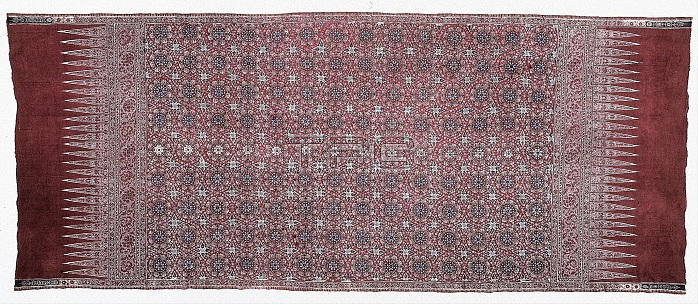
Oversize Hip Wrapper (tapis), mid-1700s. This colourful, elegantly patterned cloth was made in India for export to Indonesia in the East-West spice trade of the Dutch United East India Company. On the island of Sumatra such cloths, worn by both men and women, acquired ceremonial status, sometimes with magical and religious connotations. The pattern influenced local textile production, especially the heading at each end with triangles ( kepala ) on the deep red ground. The rich colours were a renowned hallmark of Indian cotton textiles, coveted in both Europe and the East. The Indian expertise in mordant patterning and dyeing was based on centuries of experience that foreigners sought in vain to duplicate. In 1734 a Frenchman, M. de Beaulieu, documented 11 stages of the labor-intensive process. It included applications of mordants (chemicals that fix dyes) that reacted in dye baths to produce specific colours; wax to keep desired areas white and dyed areas protected in subsequent dye baths; and bleaching in dung baths to lighten the ground.
| px | px | dpi | = | cm | x | cm | = | MB |
Details
Creative#:
TOP25294853
Source:
達志影像
Authorization Type:
RM
Release Information:
須由TPG 完整授權
Model Release:
No
Property Release:
No
Right to Privacy:
No
Same folder images:

 Loading
Loading